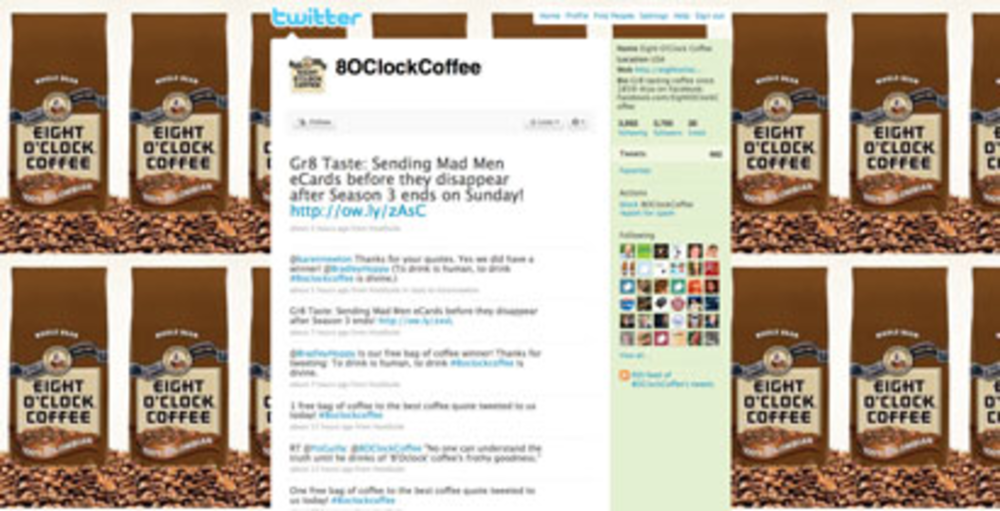Email Data Source last week debuted a Twitter monitoring tool at the Ad:tech trade show in New York. The e-mail data analysis firm will incorporate the Twitter measurement tool with its existing e-mail analytics tool.
The platform will be available to clients, with plans to market it to prospects as well.
Bill McCloskey, chairman, co-founder and chief evangelist at Email Data Source, said the tool will enable marketers to measure Twitter’s impact on the traditional brand marketing perspectives of reach, frequency and effectiveness.
Tweeters and re-Tweeters are, in a sense, broadcasters, added McCloskey.
“This will allow you to see who your most influential broadcasters are over time,” he said. “It puts the social media conversation back in traditional terms marketers understand.”
Email Data Source will monitor how many people each brand message reaches, who are the most successful “rebroadcasters” of that message; the overall impact of the message and how it relates to the brand’s Web traffic.
Sean Cummings, principal of SXC Marketing, said that Twitter-monitoring tools will help clients who are not fluent with the platform understand it better.
“The clients understand GRPs [gross rating points], and it is speaking to them in that language,” he said. “Until they’re all replaced by people who understand digital media, you have to talk to people in a language they understand. Not having GRPs online has hindered its growth.” Cummings is a former marketer, logging time at both at American Express and Ask.com.
In September, more than 15,000 unique e-mail campaigns contained a brand’s Twitter or Facebook sign-up page, according to Email Data Source’s data. The social media data intelligence could improve a marketer’s ability to evaluate the ROI of marketing efforts through Twitter.
“We’re always trying to understand what our customers are saying, as well as what our competitors are saying to our customers,” said Gretchen Scheiman, partner and associate director for e-mail marketing at OgilvyOne. “This tool gives us the ability to understand both.”
Alisa Jacoby, a consumer packaged goods marketer agreed. “This year we had a real focused effort [on social media],” said Jacoby, senior brand manager at Eight O’Clock Coffee. “I think most companies realize the value of it. As more dollars get spent in that arena, we’ll need to show the impact of it, and I think something like this tool makes a lot of sense.”
Cummings said tracking the effectiveness and the downstream influence of Tweets is a valuable tool, especially among highly competitive brands. He added that the efficiency of one provider tracking both e-mail and Tweets takes a step out of the process, while at the same time showing the marketer the correlation between the two. “If you have a better tool in your toolbox, you can beat the other guy,” he said. “It’s very dog eat dog in marketing and advertising.”
However, Cummings warned that data on its own without context can also cloud the picture for marketers. “This is something that can increase analysis paralysis,” he noted. “We end up getting mired in the tracking rather than elevate above that to whether a click matters.” l








